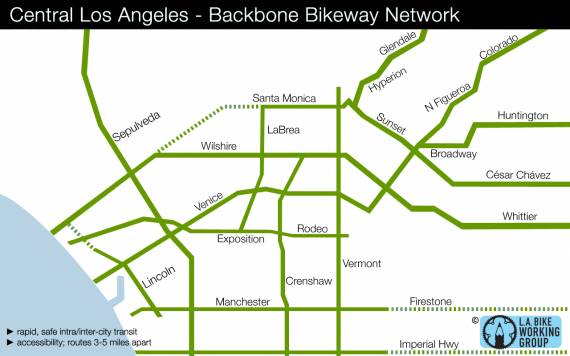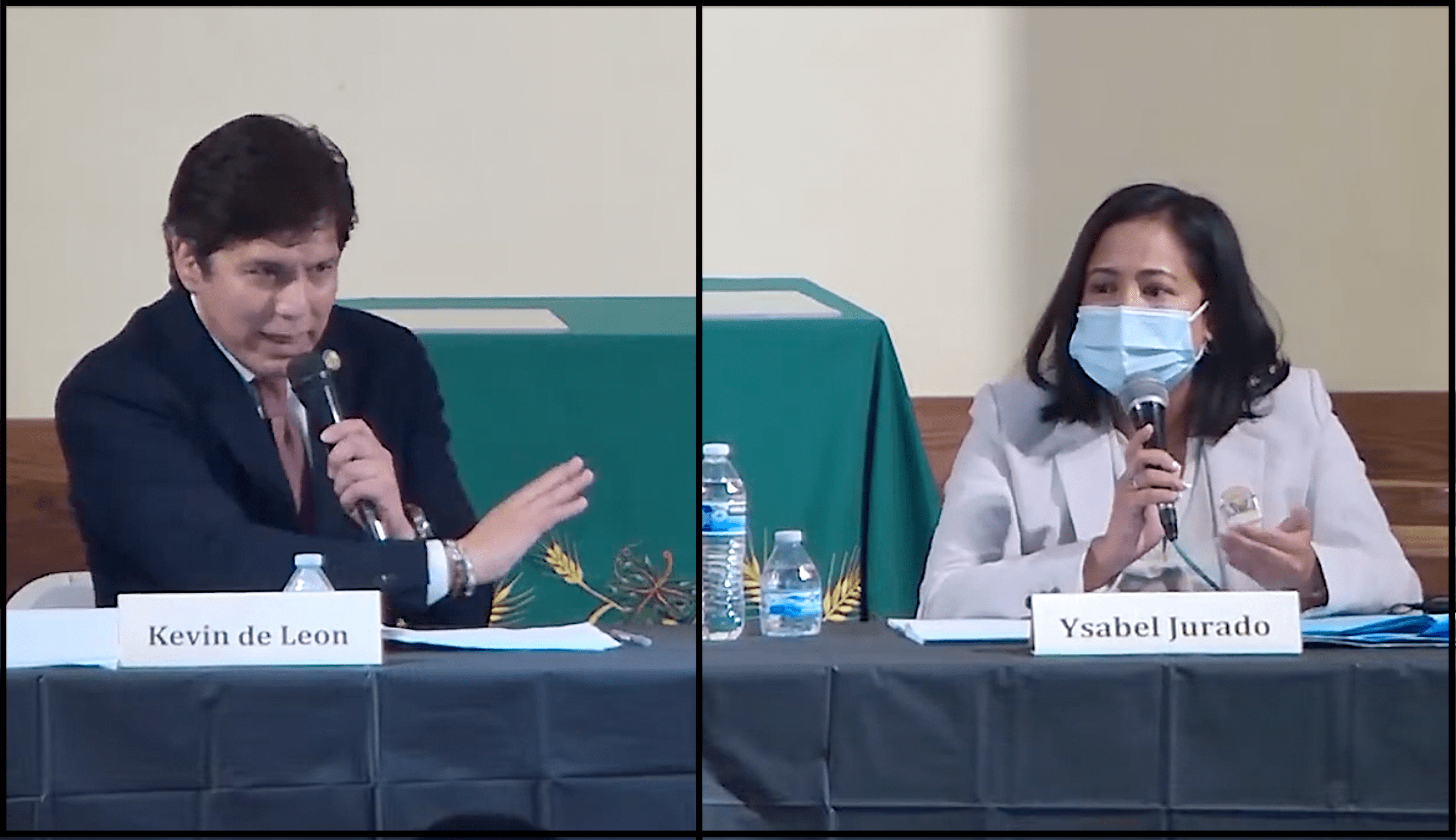
Since November's continuance, the City Planning Department (DCP) has worked with the commission and with local cyclists and made additional modifications to the plan. The newly modified Bike Plan is anticipated to be approved when it is heard by the City Planning Commission this Thursday December 16th at 8:30am. The meeting will take place at the Van Nuys City Hall, 14410 Sylvan Street, Van Nuys 91401 - located three blocks north of the Metro Orange Line Van Nuys Station.
There are quite a few modifications listed in the staff report on the city's Bike Plan website. A flurry of important changes were made during negotiations the day of the November Planning Commission hearing, and detailed in this earlier Streetsblog article: elimination of proposed/potential categories implying burdensome environmental review, specifying minimum lane widths, and others.
Perhaps the most prominent change in the latest proposed draft is the inclusion of the Backbone Bikeway Network. The earlier 2010 draft included a largely-arterial bike facility network that appeared to be based on the Bicycle Working Group's Backbone Bikeway Network, but was watered down and labeled Citywide Bikeway Network. Bikeside's Alex Thompson worked with DCP to incorporate a full-featured Backbone, actually called the "Backbone Network." The draft plan now includes a "707 mile Backbone Network [that] will enable access to major employment centers, transit stations and stops, and educational, retail, entertainment, and other open space and recreational resources."
This Los Angeles County Bicycle Coalition calls it A Plan We Can Support; their article outlines additional recent changes regarding: education, re-paving, accountability, safe routes to school, prioritization of low-income areas, and bike counts.
Once the Bike Plan receives Planning Commission approval, it goes to City Council Planning and Land Use Management (PLUM) Committee, which is expected to hold a joint hearing with the council's Transportation Committee. Not yet finalized/released for Planning Commission, but expected to be heard by PLUM and T-Committee is a new draft of the 5-Year Implementation Strategy.
After committee approvals, the plan goes to the full City Council, then to Mayor Villaraigosa. At that point, the hard work of implementation gets underway. An activated community can accelerate program and facility implementation, even going beyond what's specified in an approved plan. Seemingly-visionary plans can also gather quite a bit of dust on city shelves. If Los Angeles' livability advocates truly want to see needed changes on the ground and in the streets, then they will need to work with communities and city staff to ensure that the new Bike Plan is implemented without delay.




